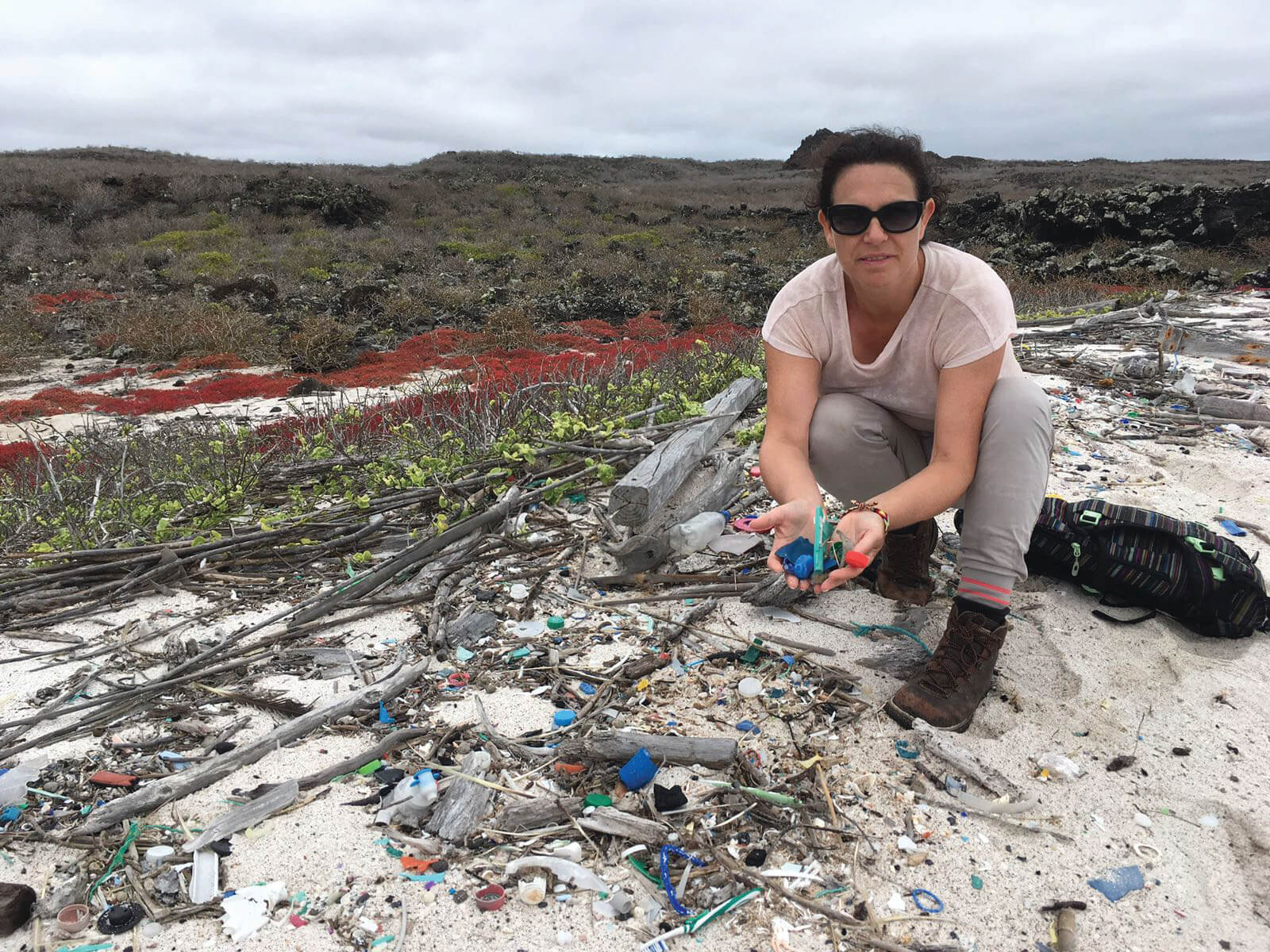Words by Sharon Johnson, CEO, Galapagos Conservation Trust
The Galapagos Islands are unlike anywhere else on Earth, the birthplace of Charles Darwin’s theory of evolution by natural selection and a unique and unspoiled ecosystem. Along with its worldwide notoriety due to Darwin’s work on evolution, Galapagos later went on to become the first ever UNESCO World Heritage Site and a popular destination due to its reputation for unique and incredible wildlife. This still holds true with around 80% of the land birds, 97% of the reptiles and land mammals and 20% of the marine species in Galapagos not found anywhere else in the world.
As the CEO of Galapagos Conservation Trust (GCT), the only UK registered charity to focus exclusively on the conservation and sustainable development of the Galapagos Islands, I am passionate about protecting this unique biodiversity. We are all repeatedly warned of the accelerating rate of species extinction worldwide and sadly Galapagos is no exception, with over 80 of the Islands’ species now listed as either critically endangered or endangered on the IUCN Red List of Threatened Species. At GCT, we are at the forefront of the hugely important habitat and species conservation work needed in response to key threats facing the Islands.
One of our flagship programmes, Restoring Floreana, looks to eradicate invasive species introduced by humans such as rats and feral cats, that have a devastating impact on local wildlife. Along with the restoration of the Island’s natural habitat, this work will lead to the reintroduction of native, locally extinct species such as the Floreana mockingbird and the racer snake, now only found on two tiny islets nearby. This is the first project that seeks to completely eradicate invasive species on a large, tropical, inhabited island and is a massive undertaking but an extremely significant time on the Islands.
Our second flagship programme, Plastic Pollution Free Galapagos, is very close to my heart and aims to tackle one of the most pressing issues facing island ecosystems around the world today, plastic. While Galapagos remains one of the most pristine environments in the world, it is not immune to this problem, in fact, it is more vulnerable due to the number of high risk endemic species found there. During my own visits to Galapagos, I have seen the devastating impact plastic is having but also had the opportunity to experienced first-hand the work taking place to fight it. To better understand the extent of the issue, last summer I spent time in Galapagos to trial drone technology being used to survey the plastic pollution. We are bringing together experts from many fields to combine ground-breaking scientific research with coordinated education and outreach to make Galapagos plastic pollution free once again. This is just one example of how GCT has brought together a host of experts from around the world and local community leaders to solve this issue, resulting in the Islands now regarded as the best place in the world to show how a marine reserve can tackle plastic pollution in our oceans.
At GCT, we respond to the key threats facing the islands: invasive species, the increasing human footprint and habitat loss, linking to national and global plans for sustainable development and the protection of biodiversity. As well as our flagship programmes, we support a host of projects from studying and protecting the migratory routes of sharks through the Galapagos Marine Reserve; measuring the nesting success and hatchling survival of Galapagos giant tortoises; to monitoring newly reintroduced land iguanas to their original islands. As a charity, we rely on the generosity of donors in the UK and abroad to raise money to support our work so that we can preserve Galapagos for generations to come. To find out more and to donate, please visit: galapagosconservation.org.uk
